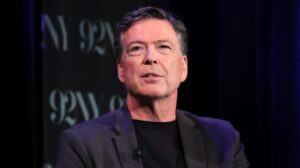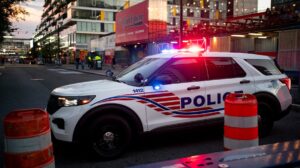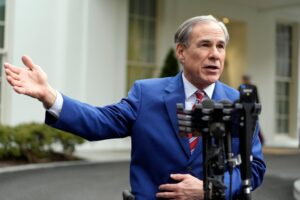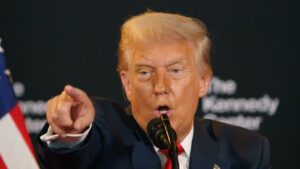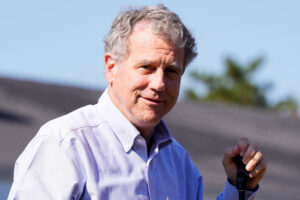Politics
Why 40 million eligible voters are restricted from many polling places
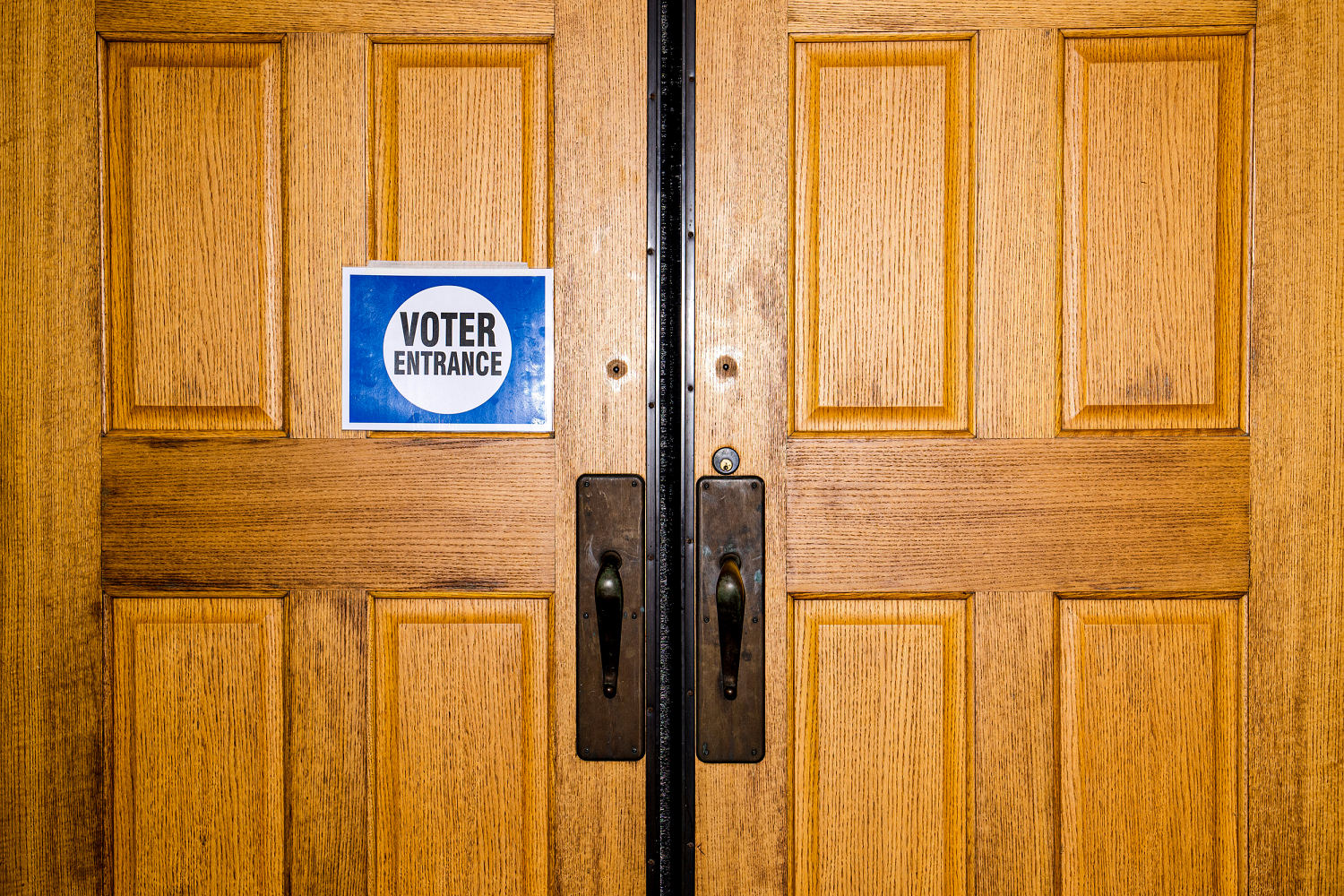
In November 2012, when I was a student at the University of North Carolina at Chapel Hill, I cast my ballot at one of the dining halls. As someone who grew up in California, I was excited to feel that my vote “mattered” in a swing state. The building had an elevator and could be entered relatively easily if someone had a cane or required a wheelchair.
A year and a half later, in my final weeks at UNC, my polling place during the 2014 primary had changed to the local Hillel, just off campus. As I approached the building, the first thing I noticed was that it had two steps to get in, which made me think of how it might be harder for my physically disabled classmates to vote, to say nothing of my disabled Jewish classmates who wanted to freely practice their faith and meet similar people.
Just because a polling place has an accessibility symbol does not mean it is fully accessible for people with disabilities.
I thought about those moments earlier this month as early voting began in swing states like Georgia and North Carolina. The difference in those structures tells a story about how religious institutions are exempt from the same rules that require other private businesses and government buildings to accommodate people with disabilities. And it might compromise those people’s ability to cast their ballot.
A major reason for the discrepancy comes from the Rehabilitation Act of 1974 and the Americans with Disabilities Act. Section 504 of the ADA stipulates that any employers and organizations that receive financial assistance from the federal government cannot discriminate against people with disabilities. Most famously, in 1977, disability rights activists led by Judith Heumann, who died last year, occupied a federal building to force the federal government to implement that section.
But the ADA explicitly exempts religious institutions from Title III, which bans discrimination against people with disabilities in places of public accommodation, such as businesses open to the public. Religious organizations like the Southern Baptist Convention and the Catholic League actually lobbied for protection when the law was being written. William Bentley Ball, who was called God’s litigator, specifically warned that religious freedom “will be directly involved if churches and religious schools are not expressly exempted from the terms of the ADA.”
A new report from Rutgers University found that over 40 million eligible voters are disabled. Many of them may have to adjust their plans to avoid polling places that are difficult to access. According to Christianity Today, about 20% of polling places are in churches. And the raw number of religious institutions that serve as polling places masks the actual challenges given that religious institutions might be the only polling place in a county.
“Once you start to disaggregate the numbers and disaggregate the data, you see a different picture, where in particular states, it can be up to 50% — so half of all polling places — are located in churches or religious institutions,” Jasmine Harris, a professor of law at the University of Pennsylvania, told me.
This is not to say that nonreligious institutions are perfect. Far from it.
Take the battleground states of Georgia and North Carolina. On the first day of early voting in Georgia, more than 300,000 people cast their ballots. In North Carolina, more than 1 million people cast their ballots. People turning out in droves to vote is a moment for celebration in the United States. But obstacles remain to that turnout: In North Carolina, 25% of polling places are in churches. In Georgia, the share is 32%.
Harris also noted that just because a polling place has an accessibility symbol does not mean it is fully accessible for people with disabilities.
“That only gets you so far. That only would tell you whether the outside structure has any barriers, any architectural barriers,” she said. But that does not say what the training is like for poll workers or if the technology is accessible for people who are blind or low-vision.
“We have a really messy system that’s really problematic and has the guise of accessibility,” she said. And while it may not be an issue for a church to be a polling place in a city with many other options, in a place like Davidson Township, Pennsylvania, with only 549 residents, the sole polling location is a church, meaning that voters with disabilities may have few alternatives. In the 2020 election, according to Christianity Today, every polling place in Rincon, Georgia, population 11,000, was a church.
This is not to say that nonreligious institutions are perfect. Far from it. Thirty-four years after the ADA was enacted, many places of public accommodation and even government buildings remain wholly inaccessible. But to have a specific carveout for religious entities creates just one more barrier for people with disabilities. And ironically, it locks them out of using their voice to change circumstances to make the world more accessible.
Eric Garcia is the senior Washington correspondent and bureau chief for The Independent. He is the author of “We’re Not Broken: Changing the Autism Conversation.”
Politics
Inside the DNC’s money problems
The Democratic National Committee has fallen far behind in the cash race.
After a brutal 2024 election and several months into rebuilding efforts under new party leadership, the DNC wildly trails the Republican National Committee by nearly every fundraising metric. By the end of June, the RNC had $80 million on hand, compared to $15 million for the DNC.
And the gap — nearly twice as large as it was at this stage in Trump’s first presidency — has only grown in recent months, a Blue Light News analysis of campaign finance data found, fueled by several distinct factors.
Major Democratic donors have withheld money this year amid skepticism about the party’s direction, while the small-dollar donors who have long been a source of strength are not growing nearly enough to make up the gap. And the party has quickly churned through what money it has raised in the first half of the year, including spending more than $15 million this year to pay off lingering expenses from Kamala Harris’ presidential campaign.
The DNC has less cash this summer than it did at any point in the last five years.
“I understand that donors want some kind of a reckoning,” said Steve Schale, a Florida-based Democratic strategist. “But I also think that the kind of state party building that I think [DNC Chair] Ken [Martin] wants to do at the DNC is really vital to our success. And so I hope people kind of get over themselves pretty quick.”
The fundraising troubles reflect ongoing questions about the DNC’s direction under Martin, who was elected earlier this year, and comes as the DNC has faced months of bitter infighting. Continued cash shortages could limit the party’s ability to rebuild for a new cycle. And the DNC’s money woes stand in particularly stark contrast to Republicans, who have leveraged President Donald Trump’s fundraising prowess to raise record sums.
“Chair Martin and the DNC have raised more than twice what he had raised at this point in 2017, and our success in cycles thereafter is well documented. Under Ken, grassroots support is strong,” DNC Executive Director Sam Cornale said in a statement. “It’s now time for everyone to get off the sidelines and join the fight. Rebuilding a party is hard — rebuilding relationships and programs take time and will require all hands on deck to meet this moment.”
The DNC’s money woes stand out among major Democratic groups, Blue Light News’s analysis found: Democrats’ House and Senate campaign arms are near financial parity with their Republican counterparts, and several major donors who have withheld funds from the DNC are still giving to those groups.
“Donors see the DNC as rudderless, off message and leaderless. Those are the buzzwords I keep hearing over and over again,” said one Democratic donor adviser, granted anonymity to speak candidly about donors’ approach.
The DNC, on the other hand, touts Democrats’ success in state and local elections this year as proof the party’s investments are paying off. The group also began transferring more funds to state parties this year, and argues it is better-positioned financially than it was at this time in 2017, when it also significantly trailed the Trump-powered RNC.
Some Democrats attribute the slowdown among donors primarily to the need for a break after 2024, and the challenges of being the party out of power. Large donors would rather bump elbows with high-profile figures like a president or House speaker; Democrats cannot put on those kinds of fundraising events right now. The DNC also struggled for cash during Trump’s first presidential term, and that did not stop Democrats from taking back the House in 2018, or winning the presidency in 2020.
Still, the longer the DNC struggles to build up cash, the harder it will be to close that gap heading into the 2026 midterms and beyond. And the fact that other party committees are not seeing the same financial struggles puts more responsibility on Martin and his team to figure out a way to right the ship.
“Obviously, the sooner the DNC and other Democratic-aligned groups can get investment, the better. It’s better for long-term programs on the ground, it’s better to communicate our message early on,” said Maria Cardona, a DNC member and Democratic strategist. “However, I think you’re going to see donors coming into those things because they are starting to see Democrats fighting back, and that’s what they want.”
Just 47 donors gave the maximum contribution to the DNC in the first half of the year, according to the Blue Light News analysis of the party’s filings with the Federal Election Commission. Over the same period in 2021, more than 130 donors gave a maximum contribution. (In 2017, when the party was similarly struggling with large donors, the figure was 37.)
That means dozens of the DNC’s biggest donors from early last cycle have not yet given to it this year — accounting for several million dollars the party group has missed out on this time.
Many of those biggest donors have continued to contribute to other Democratic groups and candidates, indicating they are still aligned with the party and willing to dole out cash — though often not as much, and not to the DNC.
In the run-up to the DNC chair election earlier this year, several large donors publicly preferred Ben Wikler, the Wisconsin Democratic Party chair, to Martin, who long served as the leader of Minnesota’s Democratic-Farmer-Labor Party and also led the Association of State Democratic Parties.
“If Ken [Martin] really wanted to impress donors, he’d go do 20 or 30 salon events with donors and let them yell at him,” said the Democratic donor adviser. “If you take that on the chin, make some changes, then I think we could see some movement. But [he’s] not going to do that.”
With large donors lagging, the DNC has touted record grassroots fundraising from online donors. On ActBlue, the primary Democratic online fundraising platform, the group raised $33.8 million over the first six months of the year, up from $27 million over the same time in 2021.
But the total number of online donors was roughly the same in both periods — suggesting online donors are giving more than they were four years ago, but the group’s donor base has not expanded substantially.
Most DNC donors this year were contributors to Harris’ campaign or the DNC last cycle, according to the Blue Light News analysis. Another 14 percent of donors had no record of donations on ActBlue last cycle, suggesting the DNC is finding new small donors — but not nearly fast enough to make up for the drop-off among large donors.
In fact, the rate of online giving to the DNC has slowed in recent months. The party’s best online fundraising month was March, when it raised $8.6 million on ActBlue from 254,000 donors; in June, the party raised $4.1 million on the platform from 157,000 donors.
And reaching those online donors comes at a cost: The DNC has spent $5.7 million on online fundraising this year, according to its FEC filings. On Meta, which includes Facebook and Instagram, it is one of the largest political spenders this year, according to the platform’s data. The total spent on fundraising expenses so far is nearly as much as the DNC has sent to state parties this year.
Another set of major expenses also stands out for draining the DNC’s coffers: continuing to pay off expenses from Harris’ failed 2024 presidential bid.
Her campaign ended last year’s election with roughly $20 million in unpaid expenses, according to people familiar with its finances, although none of Harris’ campaign committees or affiliates ever officially reported debt. The DNC has spent $15.8 million total on coordinated expenses with the Harris campaign this year, including $1.3 million in June. A party spokesperson declined to comment on future campaign-related payments.
Elena Schneider contributed to this report.
Politics
Conservatives mock Comey over Taylor Swift video
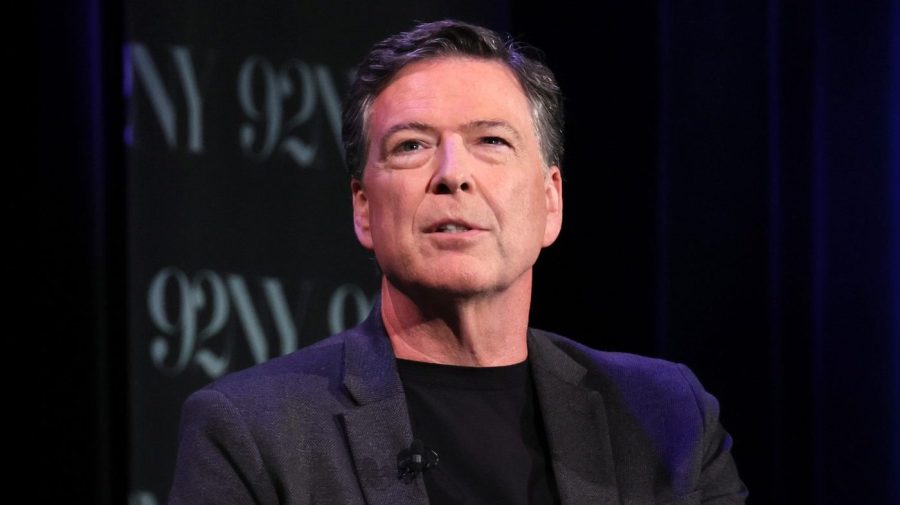
Conservatives are mocking former FBI Director James Comey over a post he made on his Substack on Sunday in which he discussed his admiration for pop superstar Taylor Swift. The post features a video of Comey calling Swift “a truly inspirational public figure” and noting her recent appearance on NFL stars’ Jason and Travis Kelce’s…
Read More
Politics
Trump criticizes ‘fake news,’ Democrat, Zelensky in series of posts
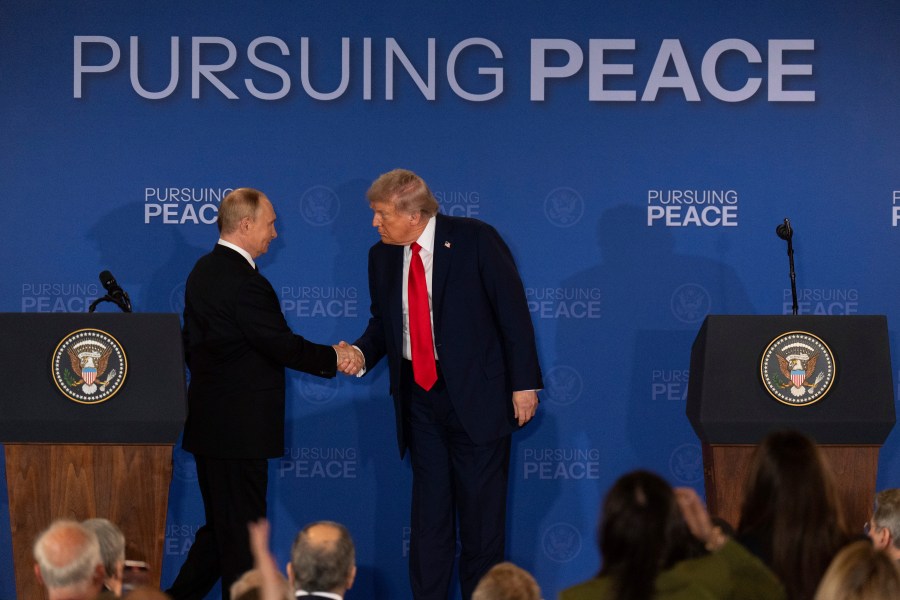
President Trump late Sunday in a pair of posts on Truth Social ripped the media and a prominent Democrat for criticisms of his summit on Friday with Russian President Vladimir Putin. Trump met with Putin in Alaska, and will meet Monday with Ukraine President Volodymyr Zelensky as he seeks to find a way to end…
Read More
-
Uncategorized9 months ago
Bob Good to step down as Freedom Caucus chair this week
-

 The Josh Fourrier Show9 months ago
The Josh Fourrier Show9 months agoDOOMSDAY: Trump won, now what?
-
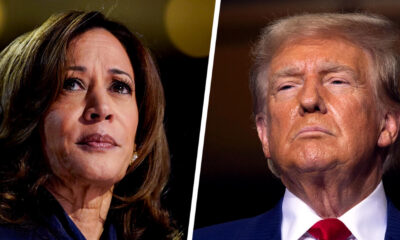
 Politics9 months ago
Politics9 months agoWhat 7 political experts will be watching at Tuesday’s debate
-
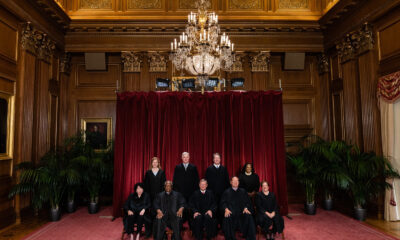
 Politics9 months ago
Politics9 months agoHow Republicans could foil Harris’ Supreme Court plans if she’s elected
-
Economy9 months ago
Fed moves to protect weakening job market with bold rate cut
-
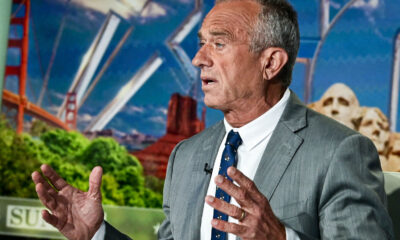
 Politics9 months ago
Politics9 months agoRFK Jr.’s bid to take himself off swing state ballots may scramble mail-in voting
-
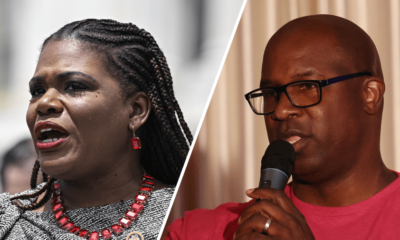
 Politics6 months ago
Politics6 months agoFormer ‘Squad’ members launching ‘Bowman and Bush’ YouTube show
-

 The Dictatorship6 months ago
The Dictatorship6 months agoPete Hegseth’s tenure at the Pentagon goes from bad to worse



